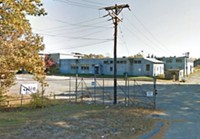Advertisement
Grab your lab coat. Let's get started
Welcome!
Welcome!
Create an account below to get 6 C&EN articles per month, receive newsletters and more - all free.
It seems this is your first time logging in online. Please enter the following information to continue.
As an ACS member you automatically get access to this site. All we need is few more details to create your reading experience.
Not you? Sign in with a different account.
Not you? Sign in with a different account.
ERROR 1
ERROR 1
ERROR 2
ERROR 2
ERROR 2
ERROR 2
ERROR 2
Password and Confirm password must match.
If you have an ACS member number, please enter it here so we can link this account to your membership. (optional)
ERROR 2
ACS values your privacy. By submitting your information, you are gaining access to C&EN and subscribing to our weekly newsletter. We use the information you provide to make your reading experience better, and we will never sell your data to third party members.
Environment
Dow Begins Dioxins Cleanup
Company plans to remove contaminated sediment from river near Michigan complex
by Glenn Hess
July 12, 2007
Dow Chemical has begun work to remove contaminated sediments from the Tittabawassee River, downstream from its 1,900-acre manufacturing complex in Midland, Mich. The sediments are contaminated with high levels of dioxins, furans, chlorobenzenes, metals and other materials.
Work began on July 9 after the Michigan Department of Environmental Quality (DEQ) and the Army Corps of Engineers issued a revised permit for Dow to construct a steel coffer dam to contain the materials and facilitate their removal from the river.
The permit was revised to address three dioxin "hot spots" discovered along the upper 6 miles of the Tittabawassee River last November. The areas of concern are subject to flooding and erosion that could spread the contamination, according to DEQ.
Dow promised to take corrective action in 2003, but progress "has taken too long," the Environmental Protection Agency alleged in a June 27 notice. EPA ordered Dow to begin field work by Aug. 15 (C&EN, July 9, page 28).
A Dow spokesman says the company has been working with state officials for some time to design and implement a cleanup plan. "Some work where we had the authorization to go ahead had already gotten under way. But some of the work in the river itself wasn't permitted yet, so we really couldn???t go full-scale," he says.
DEQ says the dam will be removed at the end of the project. Dow has also been building a mile-and-a-half-long pipeline and a sediment dewatering facility on its plant site during the past several months. After dewatering, the sediments will be disposed of in a company landfill.




Join the conversation
Contact the reporter
Submit a Letter to the Editor for publication
Engage with us on Twitter